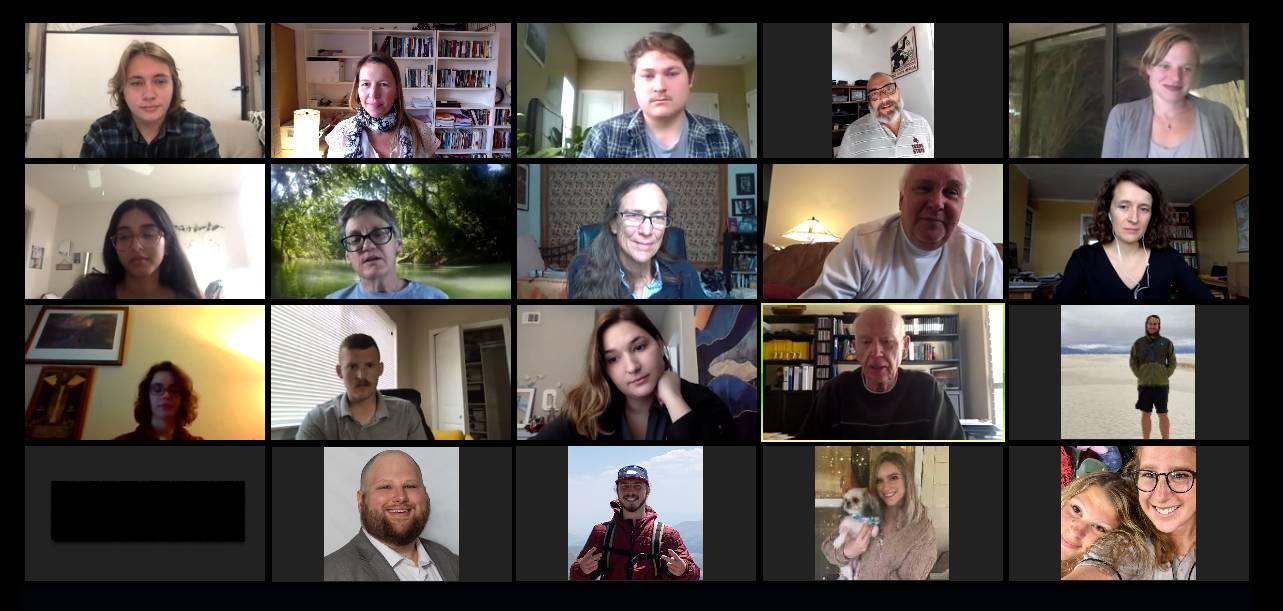Geography class partners with San Marcos group to educate about invasive vs. native Texas plants
Julie Cooper | December 3, 2020

The students in Interpretive Environmental Geography (GEO 4322-5322 ) got to put their skills to the test with a practical semester assignment designed to benefit the environment and the San Marcos Greenbelt Alliance (SMGA).
Under the direction of Dr. Colleen Myles, associate professor in the Department of Geography, 23 undergraduates and two graduate students developed a project that resulted in five short videos to educate and inform viewers about the differences between invasive plants and native Texas species. GEO 4322 is a required course for students minoring in Nature and Heritage Tourism, which is the most rapidly growing segment of the tourism industry.
On Wednesday, Dec. 2, students presented this project via Zoom. Among those in the Zoom audience were several members of the SMGA, a nonprofit 501 (c)(3) organization that was formed in 1998 to “protect the quality of life for the people of San Marcos through the interconnected parks and natural areas.” The partnership with SMGA is the third time Myles’ fall semester class has joined with a local group for a practical application. This time the goals were to raise awareness of the work by the SMGA in removing invasive species, and to educate homeowners to make better choices on plantings.
It was SMGA board member Susan Hanson who suggested the students take five plant pairs and explain how one came to be in Texas or the U.S. and how and why the native species is better for the environment. The class, divided into two groups for storytelling and video, were led by graduate students Louise Liller and Triston Rawlings.
Students developed a theme — “Even though they weren’t brought here to do harm, invasive species threaten native Texas landscapes”; and a tagline, “Invasive species, too much of a good thing.” The message in each video is clear – invasive plants bad, native plants better for the environment.
Each video highlighted a plant pair with the invasive one first followed by an alternative native plant. These included Nandina (heavenly bamboo) vs. Agarita; Chinese Tallow vs. Flameleaf Sumac; King Ranch bluestem vs. Lindheimer’s muhly; Chinaberry vs. Western soapberry; and Ligustrum vs. Yaupon.
“This group of students has done a tremendous amount of work to get this done,” Myles said in her introduction. In addition to the research, field work, creative and technical work, students offered the SMGA a social media plan, a technology implementation report, and a final interpretive suggestion report. The videos are available online with future plans for Spanish translations and or alternative subtitles.
“I am blown away,” Hanson said after seeing the videos. “They are consistent, they are short, and I learned something.” SMGA members Lance Jones and Monique Tschurr echoed Hanson’s remarks. “We are blessed in San Marcos to have all these green spaces and glad people are out there using them,” Jones said.
Chinaberry vs. Western soapberry
Share this article
For more information, contact University Communications:Jayme Blaschke, 512-245-2555 Sandy Pantlik, 512-245-2922 |